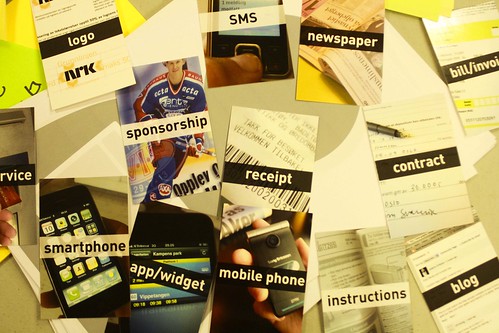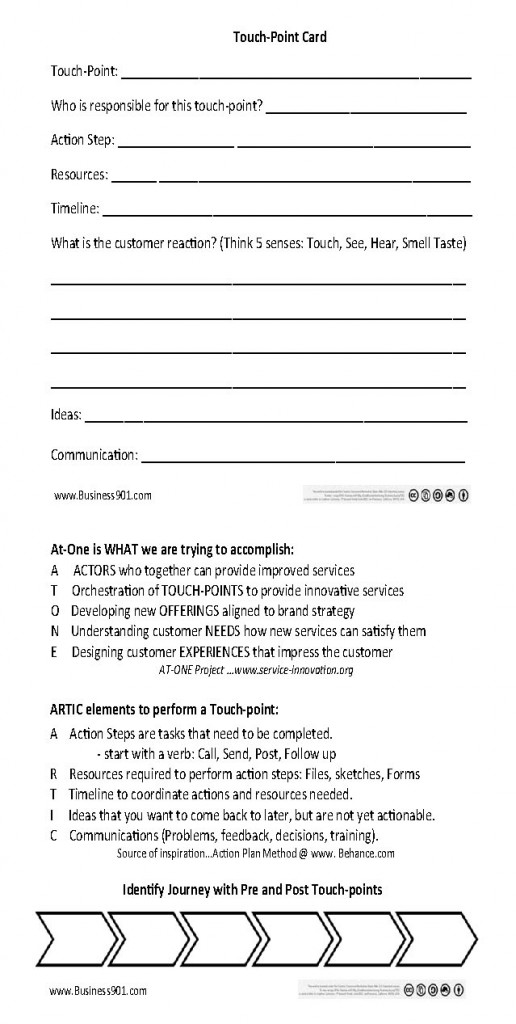The AT-ONE project headed by Simon Clatworthy at the Oslo School of Architecture and Design produced a set of service touch-point cards for the Nordic Service Design conference. I was curious about the cards and contacted Simon and he was kind enough to send a pack for me to review.
To learn more about them, I encourage you to read Simon’s PDF on the subject: Service innovation through touch-points: the AT-ONE touch-point cards or watch his presentation: Service Innovation through touch-points: the AT-ONE touch-point cards.
Simon had sent me the cards several months ago and I have used them several times now to explain how to create a Customer Journey Map or to facilitate Brainstorming idea. In these applications, they have met with a great deal of success. However, I have struggled when using them for direct applications ESPECIALLY IN THE SALES FIELD. I created an extension of the Touch-Point card to be used in the field.
These cards are not so much about ideas but the actual use of the Touch-point Card. It is a combination of the features of the AT-ONE Project and the time management system called The Action Method. The Action Method is my management planner of choice. Scott Belsky’s (founder of Behance) book, Making Ideas Happen: Overcoming the Obstacles Between Vision and Reality, describes this approach. The methodology is based on boiling down projects to the most basic elements with an emphasis on action.
PDF Version of the Business901 Touch-Point card.
The Back of the card describes the WHAT we are trying to accomplish. This is the heart of the AT_ONE project and from Simon’s paper:
Touch-points are one of the central aspects of service design. They describe one of the major differences between products and services, and are the link between the service provider and the customer. In this way, touch-points are central to the customer experience. It is not surprising then, that touch points are mentioned as one of the three pillars of service design.
The Back of the Card also includes my rendition of The Action Method and which I coin ARTIC. It is essentially the elements to perform the touch point. The bottom of the card allows space to take note of several of the preceding and post Touch-points in the process.
The front of the card is specific to an individual Touch-point. It gives you space to make sure that you have everything in order to perform the touch point and to record any points of interest. I use the term to describe it as a mini sales-report. The cards can be easily duplicated, used electronically and/or as a post-it-note in creating a journey map. Thoughts? Things I missed?
P.S. In Lean Terms these are very similar to TWI Pocket Cards.





